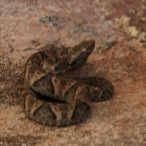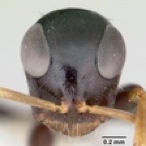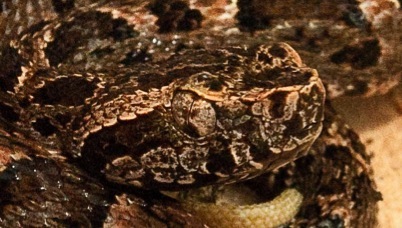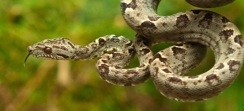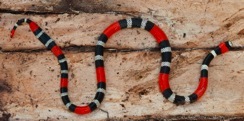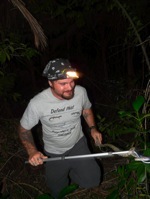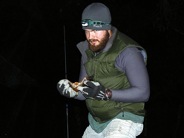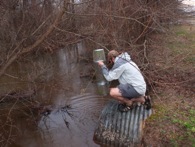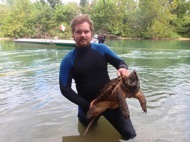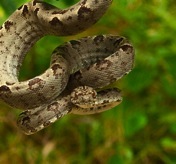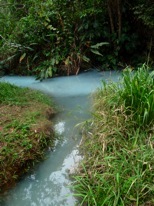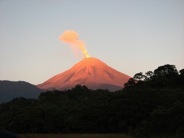**Biogeography and Phylogeography of Corallus - I investigated the spatial and temporal components that have shaped South American reptile diversity using a widely-distribued species, Corallus hortulanus, to test several biogeographic hypotheses. In addition I conducted a molecular review of the genus Corallus with a multi-locus data set using both ML and Bayesian methods. I sequenced individuals of C. hortulanus from over 40 localities for 2 mitochondrial genes (cyt-b, ND2) and 1 nuclear gene (rag-1). This species is wide-ranging, from central Venezuela south to Peru, and across Amazonia east through the Cerrado to Brazilian Atlantic Rainforest; and I infered general patterns about South American reptile diversification from my data. **Thesis project
Publications will be available on this site once accepted.
Survey and Ecological Studies of the CaveMolly (P. mexicana) along the Gulf Coastof Mexico and it Toxic Cave morphotypeSouthern Mexico - In January of 2009 and again in January of 2010 I assisted Dr. Ingo Schlupp and members of his lab in conducting surveys and experiments of fish in the genus Poecilia along Mexico's gulf coast and the Southern states of Tabasco and Chiapas. Most of our research was focused on a morphotype that occurs in both hydrogen-sulfide rich, toxic waters and a single cave in Tabasco. This cave has also been featured in multiple documentaries on the BBC, Dicovery, and Planet Earth. It is the only cave known to science that fish occur in both toxic and cave habitats and the selection pressures are unique to this system.
Riesch, R., Colston, T. C., Joachim, B. L., Schlupp, I., 2011 Natural history and life history of the Grijalva gambusia Heterophallus milleri Radda, 1987 (Teleostei: Poeciliidae). Aqua, 17(2): 95-102
Herpetological Survey of Oklahoma Wildlife Management Areas - From 2006-2009 I assisted Dr. Laurie Vitt, Dr. Janalee Caldwell and the other graduate students in the herpetology lab at the Sam Noble Oklahoma Museum of Natural History with intense herpetological surveys of the Wildlife Management Areas in Oklahoma. Since Oklahoma lies in the dividing zone between East/West species in the United States we have a diverse array flora and fauna. The data generated from these surveys will provide detailed species lists, relative abundance and ecological data that will be used in future conservation efforts.
Survey and Inventory of the Small Mammals in the State of Colima, Mexico - From December 28, 2007-January 15, 2008 I assisted Dr. Gary Schnell of the Sam Noble Noble Oklahoma Museum of Natural History, Dr. Mike Kennedy of the University of Memphis, and Dr. Troy Best of Auburn University with their ongoing survey of small mammals in Colima, Mexico. On this expedition our basecamp was located at the foot of the Fire Volcano at the Jalisco/Colima border. We took species abundance and activity data as well as species distribution data.

